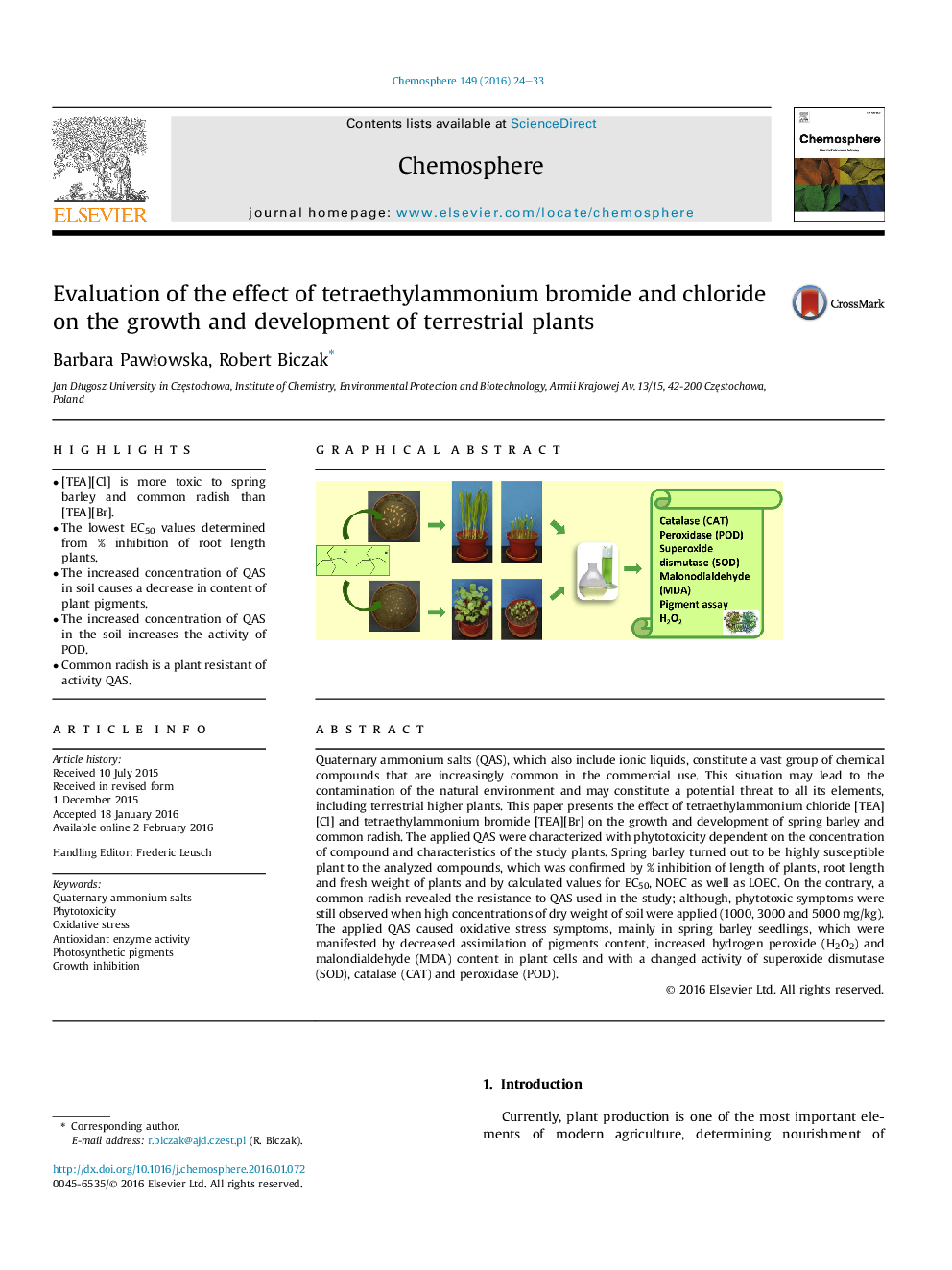| کد مقاله | کد نشریه | سال انتشار | مقاله انگلیسی | نسخه تمام متن |
|---|---|---|---|---|
| 4407899 | 1618822 | 2016 | 10 صفحه PDF | دانلود رایگان |
• [TEA][Cl] is more toxic to spring barley and common radish than [TEA][Br].
• The lowest EC50 values determined from % inhibition of root length plants.
• The increased concentration of QAS in soil causes a decrease in content of plant pigments.
• The increased concentration of QAS in the soil increases the activity of POD.
• Common radish is a plant resistant of activity QAS.
Quaternary ammonium salts (QAS), which also include ionic liquids, constitute a vast group of chemical compounds that are increasingly common in the commercial use. This situation may lead to the contamination of the natural environment and may constitute a potential threat to all its elements, including terrestrial higher plants. This paper presents the effect of tetraethylammonium chloride [TEA][Cl] and tetraethylammonium bromide [TEA][Br] on the growth and development of spring barley and common radish. The applied QAS were characterized with phytotoxicity dependent on the concentration of compound and characteristics of the study plants. Spring barley turned out to be highly susceptible plant to the analyzed compounds, which was confirmed by % inhibition of length of plants, root length and fresh weight of plants and by calculated values for EC50, NOEC as well as LOEC. On the contrary, a common radish revealed the resistance to QAS used in the study; although, phytotoxic symptoms were still observed when high concentrations of dry weight of soil were applied (1000, 3000 and 5000 mg/kg). The applied QAS caused oxidative stress symptoms, mainly in spring barley seedlings, which were manifested by decreased assimilation of pigments content, increased hydrogen peroxide (H2O2) and malondialdehyde (MDA) content in plant cells and with a changed activity of superoxide dismutase (SOD), catalase (CAT) and peroxidase (POD).
Figure optionsDownload as PowerPoint slide
Journal: Chemosphere - Volume 149, April 2016, Pages 24–33
